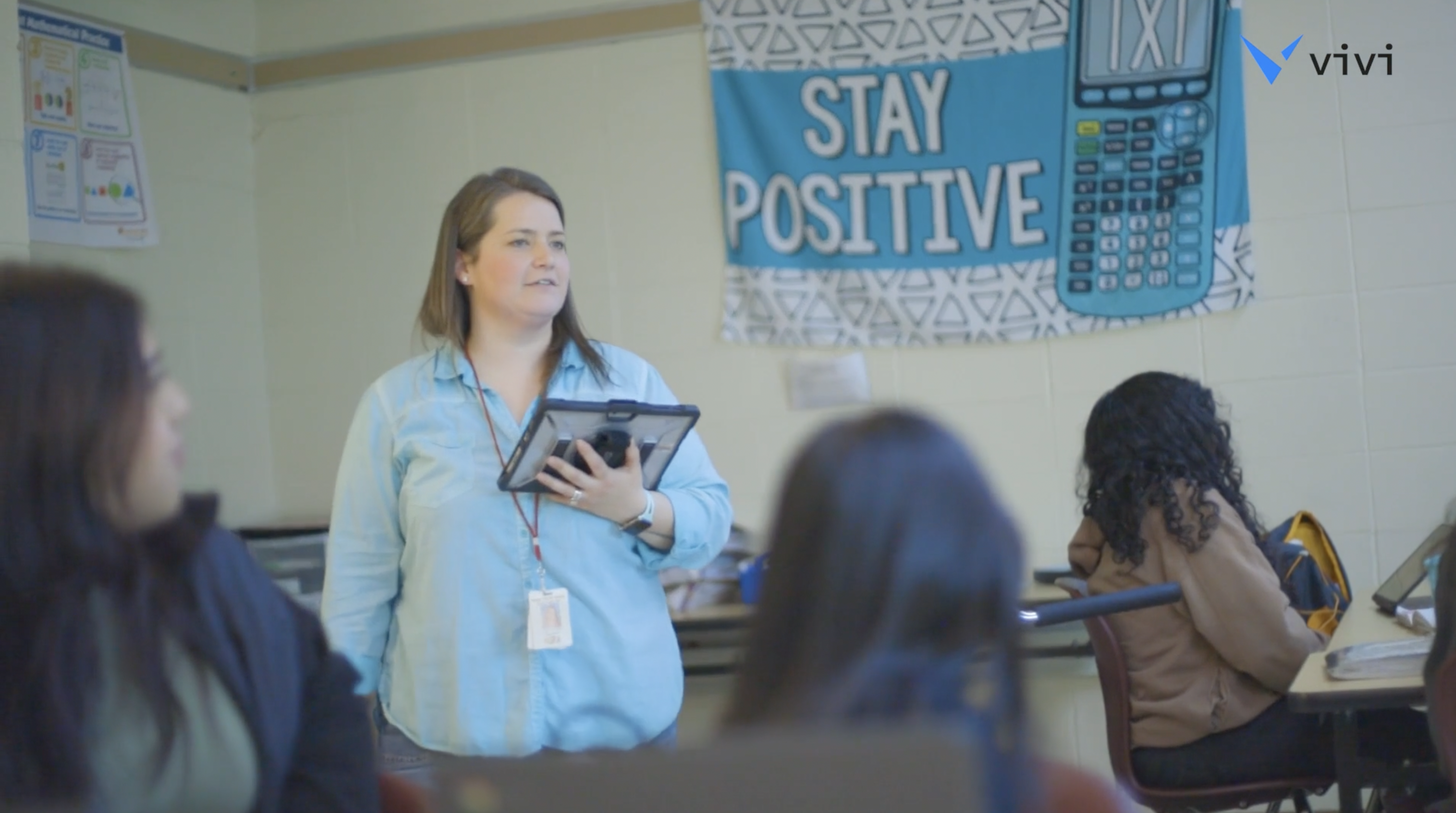
Incorporating technology into the classroom has become an essential aspect of enhancing the teaching and learning experience for both teachers and students. One tool that has transformed the classroom experience is wireless screen sharing. By freeing teachers from the physical constraints of being tied to the front of the class, the ability for teachers to share their screens, or grant permission for students to share their screens, from anywhere in the classroom, not only empowers teachers, but also revitalizes the learning environment for students.
Here are just a few ways that untethering teachers from a front-of-class display energizes classrooms and meets teacher and student needs.
Freeing the Teacher
When teachers can share content from their devices directly to interactive displays, projectors or simple flat panel displays, they can move freely around the classroom and engage directly with individual students or small groups wherever they are.
A study by the National Education Association found that teachers who are more satisfied with their jobs are more likely to create a positive learning environment for their students, which is characterized by high levels of student engagement. This engagement is associated with improved academic achievement.
Promoting Active Student Participation
Teaching in close proximity with students encourages participation and collaboration. By walking around the room, teachers can maintain eye contact more easily, gauge students’ understanding, and provide timely feedback or, when necessary, redirection. This individual attention enhances student-teacher rapport and creates a more inclusive learning environment where every student feels seen and heard.
Dynamic Classroom Management
Wireless screen sharing offers educators newfound flexibility in classroom management, facilitating easier transitions from one activity to another without the need to switch devices or rely on technical assistance. Whether it’s projecting multimedia content, displaying student work, or sharing online resources, teachers can seamlessly integrate various teaching tools into their lessons. This adaptability enhances the overall flow of the class and keeps students engaged throughout the learning process.
Individualized Learning Opportunities
Additionally, wireless screen sharing makes it possible for educators to more easily cater to different learning styles and preferences. They can share supplementary materials, interactive quizzes, or even spotlight specific students’ work on the screen, fostering a sense of accomplishment and encouraging peer learning. This personalized approach not only enhances student comprehension but also nurtures a supportive classroom community.
Classroom Technology Should Serve Classroom Needs
When implementing technology in classrooms, it is important to ensure that technology serves teacher and student needs. By untethering teachers from the front of the class, wireless screen sharing tools like Vivi update the traditional teacher-student dynamic, leading to improved engagement and meeting the diverse needs of students. The right wireless screen sharing technology should be easy for technology teams to implement, manage and support and simple for teachers to use.
Interested in learning how other districts have made the move to more flexible classroom environments? Listen to a recorded webinar in which three district technology leaders share how they freed their teachers from the front of the class and what it has meant for their classrooms.



